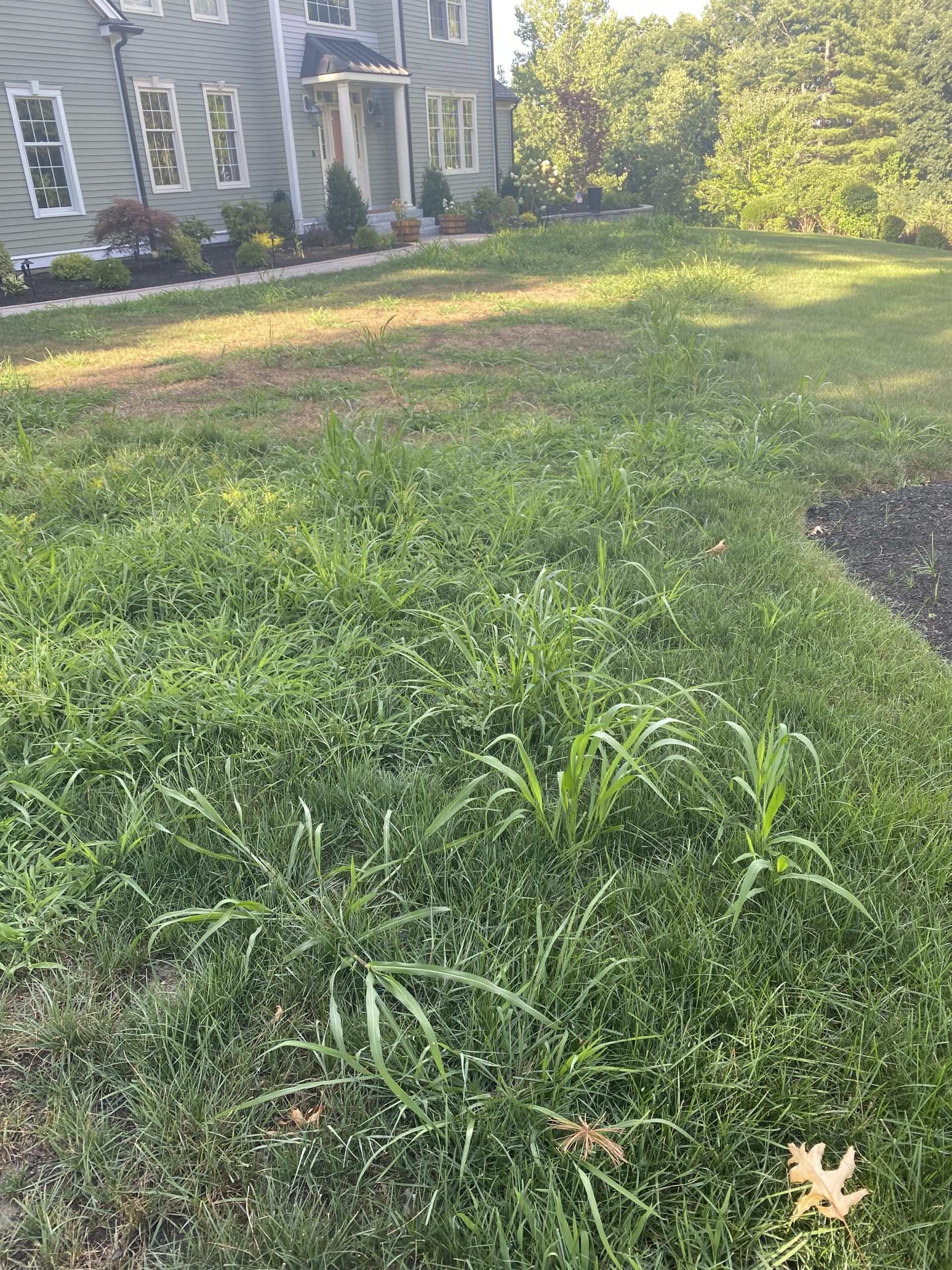The chief difference between crabgrass (or crab grass as it’s sometimes called) and Bermuda is that some property owners actually choose to cultivate Bermuda grass as their lawn, while nobody wants crabgrass. On the other hand, many people want to keep common Bermuda grass out of their lawns because of its aggressive, rapid growth. Bermuda grass, like crabgrass, can be a nuisance. Both plants have aggressive growth habits so it’s important to eradicate them sooner rather than later. Read the following information to protect your lawn from crabgrass and Bermuda grass invasion.
Table of Contents
What Is the Difference Between Crabgrass and Bermuda Grass?
Common Bermuda grass and crabgrass are quite different from one another. Though both are warm-season plants, crabgrass is an annual grass (and troublesome weed), whereas Bermuda grass is a perennial grass and can make for an attractive turf. Crabgrass produces seed spikes that each drop thousands of seeds. While the plants generally die with the first frost of fall, new plants emerge from crabgrass seeds in May or soon after the soil warms up enough for seeds to germinate.
On the other hand, Bermuda grass is a perennial lawn, so it doesn’t die in winter; it simply becomes dormant for a period. Bermuda grass spreads via its rhizomes and stolons primarily as opposed to seeds. Bermuda grass also develops an extensive root system, while crabgrass has shallow roots.
Similarities Between Crabgrass and Bermuda Grass
There aren’t many similarities between crabgrass and Bermuda grass other than both can be unwanted in lawns, and both are warm-season plants. Neither prefers cold weather. Both plants tend to stand up to foot traffic and thrive in full sunlight. Both will also seemingly sprout up anywhere–in the driveway and sidewalk cracks as well as bare patches of lawn. Although Bermuda grass spreads via its stolons and rhizomes, it can be started from seeds, but when it comes to lawn grass infiltration, it usually does not spread by seed. Either might be considered a nuisance, but crabgrass is a highly undesirable weed.
Bermuda Grass Identification
Bermuda grass is a native lawn grass of subtropical and tropical humid climates. It is a common lawn grass in the south, especially for athletic fields and golf courses, because it thrives in the sun, spreads more quickly than any other warm-season grass, and can stand up to heavy foot traffic. It is also drought and salt tolerant. Bermuda grass tolerates heat well. Some people plant it for its dark green leaves and relatively low maintenance requirements. While it can tolerate shade–a bit–it thrives in full sun and also prefers fertile soils.
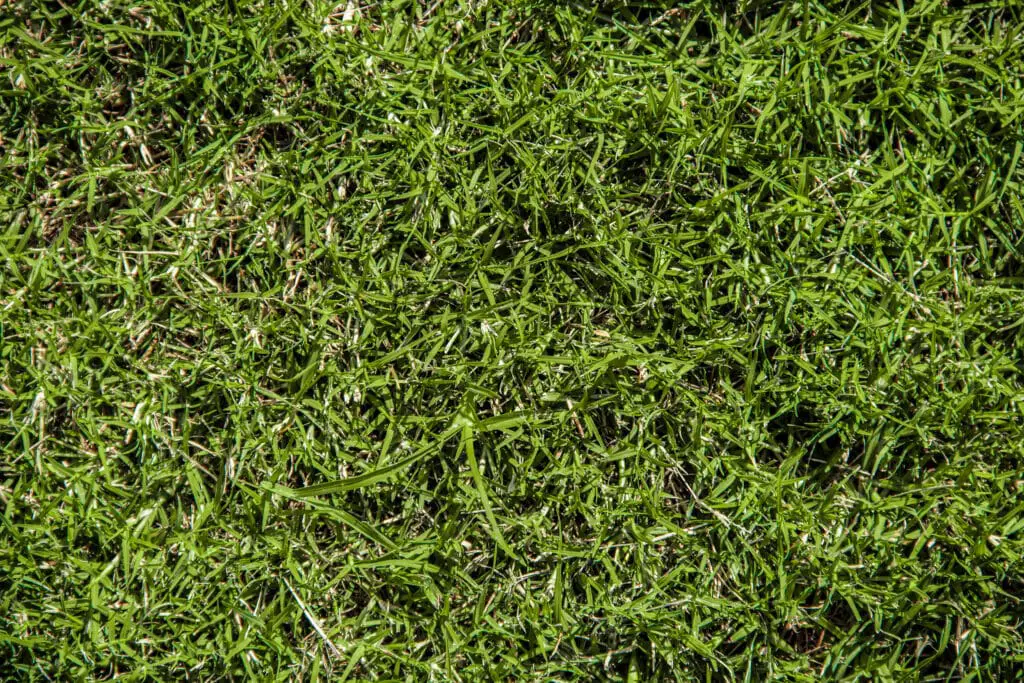
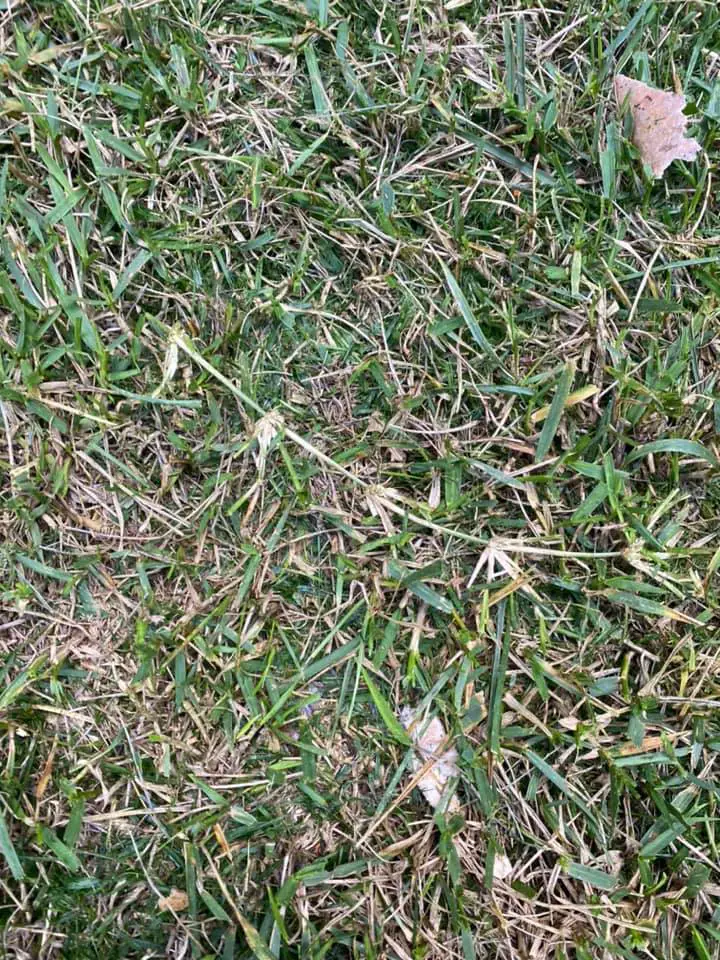
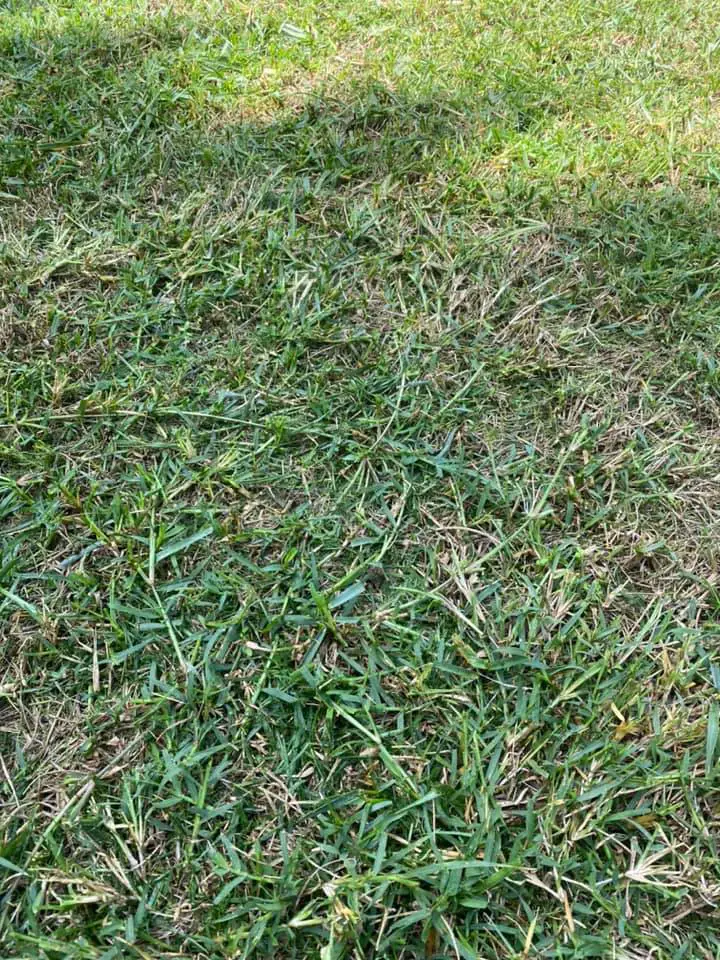
Bermuda Grass Management
Bermuda grass is a highly desirable lawn for many people and forms a dense turf and establishes deep roots, but it requires some management. First, if it’s not kept in check, it can spread to areas where you may not want it to spread such as flower beds. It’s a good idea to mulch your garden beds in order to prevent Bermuda grass from settling in. Maintaining densely planted beds can also help you with Bermuda grass weed control. Bermuda grass maintenance involves twice weekly mowing for best results and monthly fertilizing during its growing season.
Watering is a must for Bermuda grass, especially during the hot months of summer. Even though Bermuda grass is known for its drought tolerance, plants struggle to maintain their attractive appearance during the heat of summer. Water your grass early in the morning and ensure that it has about one inch of water each week. When Bermuda grass is properly cultivated and maintained (and closely mowed), you should be able to prevent it from spreading into unwanted areas of your property like among other grasses containing desirable plants.
How to Control and Kill Bermuda Grass
If Bermuda grass is an unwanted lawn grass for you and has become a nuisance for your preferred turf grass, you can first want to support your lawn’s health. A healthy grass is its own good defense against unwanted plants like grassy weeds and aggressive warm season grass like Bermuda grass. However, if Bermuda grass has spread to your lawn and flower beds, prepare yourself for a potentially long battle.
Since Bermuda grass spreads aggressively both above and below the ground via its stolons and rhizomes, it can be hard to eradicate. Even with a single dose of glyphosate–which can kill your preferred plants–it may not die. In many cases, a few applications of weed killers with glyphosate are required. Pulling Bermuda grass by hand is also notoriously fruitless. However, gardeners tend to have better luck with hand pulling when Bermuda grass is found in flower beds.
Also, keep in mind that this grass can still sprout from seed, so if you intend to pull it by hand, be sure to attack it before it develops its seed heads. Bermuda grass seeds can remain viable in the soil for a couple years. If Bermuda grass has infiltrated your lawn, you might want to contact a lawn care service for help. They have access to chemicals and have the necessary know-how needed to eradicate Bermuda grass; though, again, it may require a few treatments.
If you notice bare spots in your lawn, be sure to put down preferred grass seed quickly. Otherwise, bare spots are an invitation to other plants–especially Bermuda grass and crabgrass.
How to Identify Crabgrass
Crabgrass is easy to identify by its prostrate growth habit. This pesky weed has wide leaf blades, sprouts sideways from a dense clump, and can grow up to about two feet if left unchecked. Crabgrass has a rough texture and despite its vibrant green hue, is not particularly attractive. Like Bermuda grass, crabgrass thrives in full sun and is apt to sprout up in bare patches or in cracks. The crabgrass weed spreads by seeds rather than stolons or rhizomes.

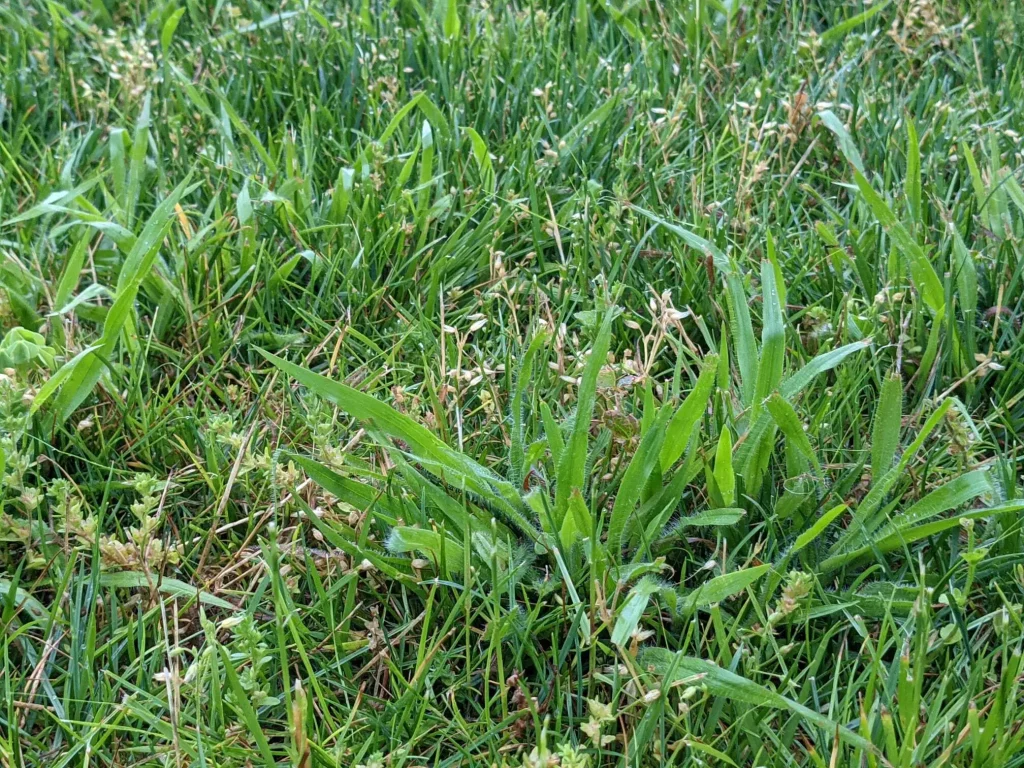
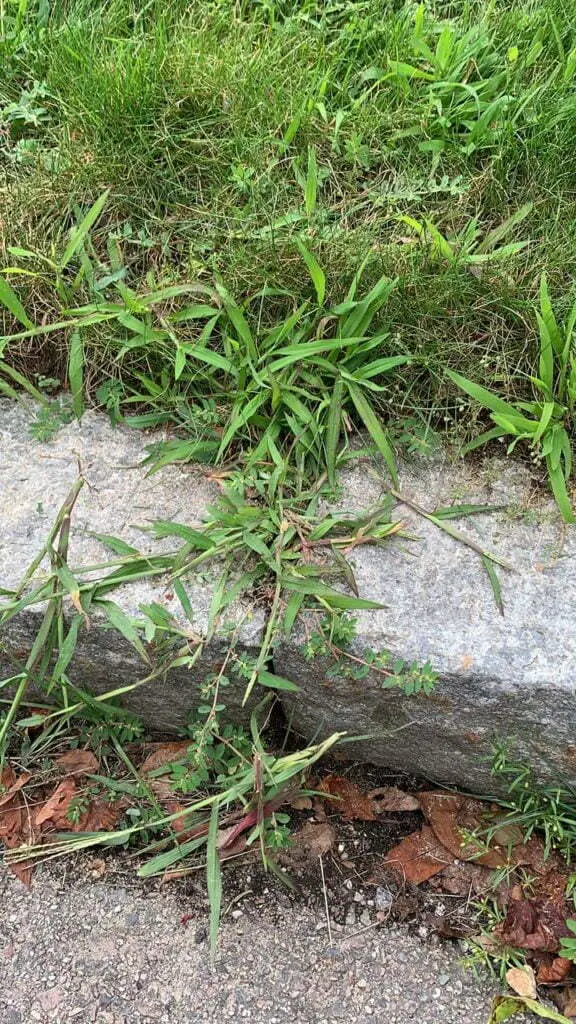
Managing Crabgrass in Lawns
Crabgrass spreads by seeds–not by stolons and rhizomes. While the plants die yearly, a single plant can produce a whopping 150,000 seeds during one growing season. These seeds can sit in the soil for many years before germinating and becoming new crabgrass plants. To control crabgrass in your lawn, I rely on crabgrass preventers like Barricade (applied before the plants develop seeds), or a post-emergent herbicide crabgrass killer containing quinclorac, such as Drive XLR8.
However, be prepared to provide these applications over several growing seasons. You’ll need to be vigilant as this plant is notorious for returning repeatedly. Remember that the key is to prevent crabgrass seeds and crabgrass seed heads from developing. Controlling crabgrass takes patience, and vigilance.
Bermuda Grass and Crabgrass FAQs
How do I know if my grass is crabgrass?
Crabgrass grows sideways from a clump. It appears to look squashed as if it’s been stepped on. It has wide grass blades with a rough texture (there are also smooth crabgrass types) and a light green hue. Crabgrass spreads by seeds, so it has shallow roots. Both smooth crab grass and rough crabgrass (with fine hair) will detract from an attractive lawn appearance.
What are the cons of Bermuda grass?
Bermuda grass is extremely aggressive, so it can spread to areas where it’s unwanted, like garden beds. It can be invasive once it enters residential gardens and crowds out other more preferred plants. Bermuda grass has a medium texture, so it may not be comfortable for walking on with bare feet.
Does crabgrass grow in Bermuda grass?
Crabgrass can grow with Bermuda grass. However, crabgrass may find it challenging to get a ‘foothold’ in a Bermuda grass lawn that’s healthy and thriving, as will other weeds. Bermuda grass and crabgrass species are drought tolerant and difficult to kill once they spread within any preferred grass species. Like crabgrass, Bermuda grass grows in other lawn types too.
What does Bermuda grass look like?
Bermuda grass has fine grass blades that are an attractive blueish green. The blue-green hue or dark green leaves often differ from other lawn grasses, making it easy to spot when it’s growing where it’s not wanted.

